Baba Baidyanath Dham, also known as Deoghar, is a revered pilgrimage site in the state of Jharkhand, India. Dedicated to Lord Shiva, it attracts millions of devotees each year. The timing of your visit to Baba Baidyanath Dham is crucial, as it can significantly impact your experience. Factors such as weather, seasons, and temperature play a vital role in determining the best time to visit. In this comprehensive guide, we will explore the different seasons, weather conditions, and temperatures at Baba Baidyanath Dham, helping you plan a spiritually enriching and comfortable pilgrimage.
Geography and Climate
Before delving into the best time to visit, it’s essential to understand the geography and climate of the region. Deoghar is located in the northeastern part of Jharkhand and is characterized by a subtropical climate.
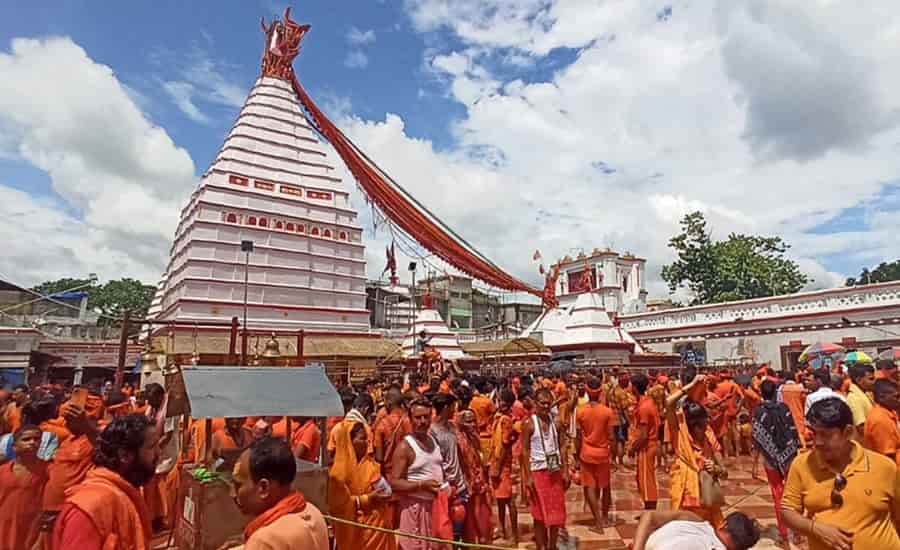
Best Time to Visit
Considering the different seasons, the best time to visit Baba Baidyanath Dham is during the winter months (December to February). Here’s why:
Pleasant Weather
The winter season offers the most pleasant weather in Deoghar. The temperatures are cool, making it comfortable for devotees to engage in religious activities and explore the surroundings. The average temperature during this period ranges from 10°C to 25°C (50°F to 77°F), providing a respite from the scorching heat of the summer.
Festival Celebrations
Several festivals, including Shivaratri, attract a large number of devotees to Baba Baidyanath Dham. Shivaratri, dedicated to Lord Shiva, usually falls in either February or March. Visiting during this time allows pilgrims to participate in the vibrant celebrations and experience the spiritual fervor.
Clear Skies
Winter is characterized by clear skies, enhancing the overall experience of the pilgrimage. The visibility is excellent, allowing devotees to have unobstructed views of the Baidyanath Temple and its surroundings.
Avoiding Extreme Conditions
Visiting during the winter months helps pilgrims avoid the extreme conditions of summer and the inconvenience of heavy rainfall during the monsoon. The moderate temperatures make it easier for devotees to perform rituals and explore the pilgrimage site without discomfort.
Cultural and Sightseeing Activities
Apart from the religious significance, Baba Baidyanath Dham and its surroundings offer cultural and sightseeing opportunities. Exploring the region’s attractions, such as Nandan Pahar and Trikuta Parvat, is more enjoyable in the pleasant winter weather.
Winter (October to February)
Winter is generally considered a favorable time to visit Baba Baidyanath Dham. The months from October to February constitute the winter season in this region. The weather during these months is cool and pleasant, making it comfortable for devotees to undertake the pilgrimage.
Temperature: The temperature during winter ranges from a minimum of 10°C to a maximum of 25°C. It is advisable to carry light woolen clothing, especially during the night when temperatures can drop.
Festivals: Many festivals, including Diwali and Makar Sankranti, fall during the winter months. Devotees often prefer visiting during festivals to experience the spiritual fervor and cultural celebrations.
Crowd: While the winter season attracts a significant number of devotees, it is relatively less crowded compared to the summer months. This makes it easier to perform rituals and have a peaceful darshan.
Spring (March to May)
Spring marks the transition from winter to summer. During this time, the weather becomes warmer, and the surroundings come to life with blooming flowers and lush greenery.
Temperature: The temperature starts to rise gradually, with daytime temperatures ranging from 20°C to 35°C. It is advisable to carry light and comfortable clothing.
Festivals: The festival of Maha Shivaratri, dedicated to Lord Shiva, often falls during the spring season. Many devotees choose to visit Baba Baidyanath Dham during this auspicious time.
Natural Beauty: Spring brings vibrant colors to the landscape, making the surroundings visually appealing. The lush greenery and pleasant weather enhance the overall pilgrimage experience.
Summer (June to September)
Summer in Baba Baidyanath Dham is characterized by higher temperatures and the arrival of the monsoon season. While the temperatures can be challenging, the monsoon brings a refreshing change.
Temperature: Daytime temperatures can soar to 40°C or more during peak summer. It is essential to carry lightweight and breathable clothing. Nights are relatively cooler, but humidity levels may be high.
Monsoon: The monsoon season, which typically begins in June and lasts until September, brings rainfall to the region. While the rain can provide relief from the heat, it may also lead to slippery paths, making the pilgrimage slightly challenging.
Festivals: Some devotees choose to visit during the holy month of Shravan, which usually falls during the monsoon season. Despite the rain, this period sees a significant influx of pilgrims.
Autumn (October to November)
Autumn is a transitional period between summer and winter. The weather is generally mild, and the surroundings maintain the greenery from the monsoon season.
Temperature: Daytime temperatures range from 20°C to 30°C, making it a comfortable time to visit. Nights can be cooler, so carrying light woolens is advisable.
Post-Monsoon Scenery: The landscapes are lush and vibrant after the monsoon, providing a picturesque backdrop for the pilgrimage. The water bodies are replenished, adding to the natural beauty of the surroundings.
Less Crowded: Autumn is considered an off-peak season, resulting in fewer crowds. This allows devotees to have a more peaceful and intimate experience during their visit.
General Tips for Pilgrimage to Baba Baidyanath Dham
- Check Festival Dates: If you wish to experience the spiritual and cultural fervor, consider planning your visit during major festivals such as Maha Shivaratri and Shravan.
- Accommodation: Book your accommodation well in advance, especially during peak seasons, to ensure a comfortable stay.
- Clothing: Pack clothing according to the season of your visit. Light woolens for winter, breathable fabrics for summer, and a mix for transitional seasons.
- Footwear: Comfortable and sturdy footwear is essential, especially if you plan to walk or trek during your pilgrimage.
- Hydration: Carry an adequate supply of water, particularly during the summer months, to stay hydrated.
- Medical Kit: Carry a basic medical kit with essential medicines and first-aid items.
- Local Cuisine: Explore the local cuisine but be mindful of food hygiene. Consume water and food from reliable sources to avoid health issues.
In conclusion, the best time to visit Baba Baidyanath Dham depends on your preferences and tolerance for different weather conditions. While winter and spring are generally recommended for a comfortable and spiritually enriching experience, some devotees may choose to visit during festivals or other specific times. Regardless of the season, proper planning, and consideration of weather conditions will contribute to a fulfilling pilgrimage to this sacred site dedicated to Lord Shiva.

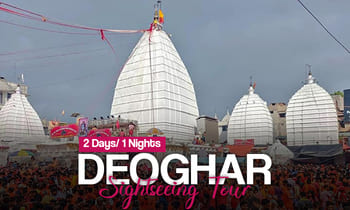
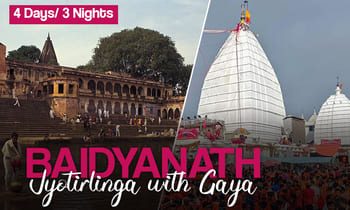
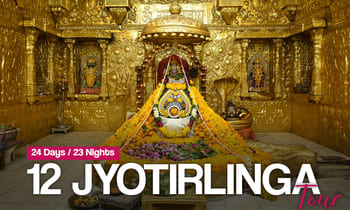

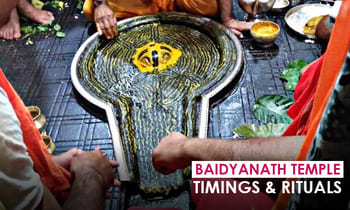
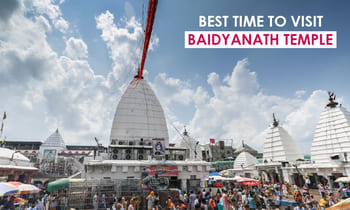
 Call
Call WhatsApp
WhatsApp Enquiry
Enquiry
where to stay overnight in deoghar
Ratri vishram kanha kare